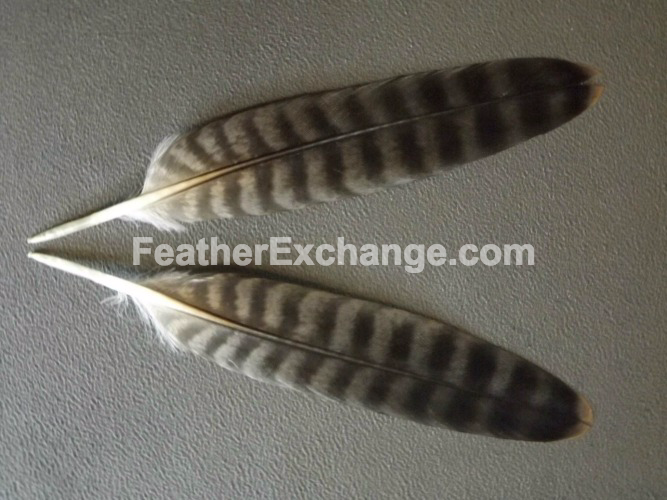

You see a falcon come in from the left at about 2:25. Don’t miss the pull up starting at about 2:25. The sibling squadron levels up! I especially enjoyed watching the chasing and action after about 1:48.
#PEREGRIN FALCON FEATHERS PLUS#
June 22, 2023: Flight training plus alert –. Falcons molt into adult plumage at two years of age…something we discussed in this blog.

Note the differences in plumage between the young and adults. A nice look at the sibling squadron at rest. June 23, 2023: Sokol wedrony – posilające się i odpoczywające młode na budce (feeding and resting chicks on the nestbox) –. P/60 flies in at 3:37 and captures it after a brief tug-o-prey! She mantles over it and lets her sister know that she intends to keep it! She struggles with the unwieldy prey, but manages to fly it into the rock ledge diner. He circles back to deliver a meal to P/59, who is waiting on the cedar snag. The video opens with Newman flying out from low on the cliff.

June 25, 2023: P/59 gets a meal from Newman. They tend to be most active in the morning and evenings. To watch the sibling squadron live, go to. We’d love to hear of any encounters in La Crosse and encourage people to report band numbers to and eBird. Will they interact with the US Bank juveniles? Adults are notoriously territorial on their breeding territories, but brown and cream juveniles are generally allowed to wander unbothered through adult territories in the post-fledging and dispersal periods. We could see them on the flyway or in La Crosse. Thomas, Kami, and Jaycie will wander further as their flight skills improve. It will soon exceed them! Dispersalĭispersal generally occurs four to six weeks after fledge and, much like fledge, is a process. After not much more than a week on the wing, the sibling squadron is rivaling the Blue Angels. Helen McDonald describes a falcon as a pair of eyes set in a well-armed, perfectly engineered airframe. An extra pair of bones at the base of its tail help it turn and brake sharply in pursuit flights.

How can a bird laboring under 25Gs pull up quickly from a dive? Its narrow, pointed wings are subject to fewer stressors than broad wings, its massive keel supports more flight muscle, its flight muscles are larger than those of similarly-sized birds, and it has exceptional control over the fine muscles in its wings and tail, so it can change its wing shape and aerodynamic properties in the blink of a peregrine’s eye. At this G-loading, a two-pound falcon weighs over 60 pounds.Ī peregrine falcon needs to handle phenomenal stresses as it turns and maneuvers nimbly under high loads. Tucker’s falcons pulled up out of dives at 25Gs. Our jet fighter pilot might lose consciousness at about six Gs. How many Gs does a falcon experience as it pulls up from a steep dive? Vance Tucker, a biologist at Duke University in North Carolina, attached an accelerometer to trained falcons. G-force measures the force of gravity or acceleration on a body. High Gs and flight configurationĪt the beginning of the video, we see one of the falcons pull up very sharply as it approaches the cliff. Thomas, Jaycie, and Kami have about two months. Their high-speed sensory and nervous systems give them extremely fast reaction times and their world moves about ten times faster than the pilot’s world. A falcon’s body is heavy in relation to its wing area and its flight profile, like the pilot’s jet, is anhedral – an unstable, upside-down Ʌ that gives falcons and fighters very nimble flight characteristics but also makes flight more challenging. The three siblings’ high-aspect wings are longer, thinner, and very maneuverable: suitable for active, flapping flight and fast gliding as opposed to the broad-winged, low-speed soaring of a turkey vulture.įortunately, juvenile falcons have longer tails and broader wings than adults – ‘training wings’ that are less maneuverable but a little easier to control as the fledglings learn to fly. Picture a young pilot stepping into a high-performance fighter jet for the first time. Their playfulness and sibling bonds will serve them well as they practice their signature moves and build muscle and skill prior to dispersing in September. In Falcon, Helen McDonald writes that falcons are playful in the nest, grabbing sticks, stones, and feathers in their feet, turning their heads upside down to watch buzzing flies and distant birds, and pulling on the wings and tails of their irritated siblings. At Great Spirit Bluff, peregrine falcon fledglings Thomas, Jaycie, and Kami are learning to hit moving targets in high-speed dives, turn and brake sharply in pursuit flights, and build muscle as they play and pursue one another, small birds, and Newman through the sky. Flight is instinctive, but skill is learned.


 0 kommentar(er)
0 kommentar(er)
